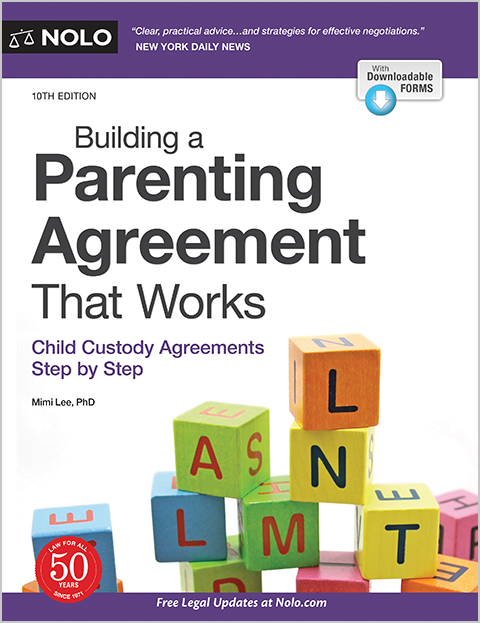Learn about the different ways you can adopt a child.
There are quite a few different ways to bring a child into your life—or to confirm your legal relationship with a child who's already part of your life—through adoption. Many of the adoption procedures are similar across the types of adoption, but some procedures and requirements are specific to each type. Here's the lowdown on the different ways that adoption can work.
Agency Adoptions
Agency adoptions involve the placement of a child with adoptive parents by a public agency or a private agency that's licensed or regulated by the state.
Public agencies generally place children who have become wards of the state for various reasons, including because they've been abandoned, abused, or orphaned.
Private agencies are sometimes run by charities or social service organizations. Children placed through private agencies are usually brought to the agency by a parent or parents who have or are expecting a child they want to give up for adoption.
Independent Adoptions
No public or private agency is involved in an independent adoption (also known as a private, "direct placement," or "parent placement" adoption). In some independent adoptions, the birth parents and adoptive parents contact each other directly to arrange the adoption. In other private adoptions, they use an intermediary such as an attorney, doctor, or clergyperson. But regardless of whether an intermediary is involved, the adopting parents will usually hire an attorney to take care of the court paperwork and other details.
Most states allow independent adoptions, although some states regulate these adoptions quite carefully. In Minnesota, for instance, a judge must preapprove a child's direct placement with prospective adoptive parents. (Minn. Stat. § 259.47 (2023).)
Massachusetts, Connecticut, and Delaware prohibit direct placement adoptions except in limited circumstances, including when the child is being adopted by a relative or stepparent (Mass. Gen. Laws. ch. 210, § 2A; Conn. Gen. Stat. § 45a-727(a)(3); Del. Code tit. 13, § 904 (2023).) Wisconsin also generally prohibits nonrelative independent adoptions, but it specifically allows the birth parents and the parent with custody of the child to ask a state or county agency to request a designated adoption (more on that below), or to ask the court for placement in a prospective adoptive home in another state. (Wisc. Stat. § 48.835, 48.837 (2023).)
An "open adoption" is an independent adoption in which the adoptive parents and birth parents have contact during the pregnancy, and the adoptive parents agree to maintain some contact after the adoption, through letters, photos, or in-person visits.
Identified Adoptions
In identified (or "designated") adoptions, the birth parents and prospective adoptive parents find each other (sometimes through an intermediary) and then ask an adoption agency to take over the rest of the adoption process. The process is a hybrid of an independent and an agency adoption. There are several benefits to this arrangement, including:
- Prospective adoptive parents are spared the long waiting lists that are typical for regular adoption placement by agencies.
- The adoptive parents reap the benefits of an agency's counseling services and experience with adoption legalities.
- Identified adoptions are available in states that otherwise ban independent adoptions.
International Adoptions
Parents who want to adopt a child from a foreign country usually do so through an American agency that specializes in international adoptions. That's because international adoptions can be difficult and involve a lot of risk. The prospective adoptive parents must satisfy the adoption requirements of both the foreign country and the parents' home state in the U.S. They must also obtain an immigrant visa for the child through U.S. Citizenship and Immigration Services (USCIS, formerly called the INS). The child will be granted U.S. citizenship automatically upon entering the United States.
The Hague Adoption Convention governs intercountry adoptions between the United States and other countries that are members of the convention. The treaty establishes federal oversight of adoption agencies here and policies overseas. The goal is to protect children, birth parents, and adoptive families from unethical adoption practices, including child abduction and hidden fees.
International adoption agencies in the U.S. must be certified by the State Department, and parents planning an international adoption must prove to the State Department that the foreign country's agencies have provided counseling for the birth parents and obtained a legal consent from them, that a local placement has been considered, and that the child has been properly cleared for adoption in the U.S.
Learn more about how to bring an adopted child from another country to the U.S.
Stepparent Adoptions
In a stepparent adoption, a parent's new spouse adopts a child the parent had with a previous partner. Stepparent adoption procedures are less cumbersome than agency or independent adoption procedures. The process is quite simple, especially if the child's other birth parent consents to the adoption. If the other birth parent can't be found or irefuses to consent to the adoption, there is more paperwork to do. In that case, the adoptive parents may very well need an attorney.
Stepparent adoptions are also used by same-sex married couples when one spouse had a child through assisted reproduction that didn't involve the stepparent's genetic material (more on that below).
Same-Sex Adoptions
Same-sex couples who are legally married may jointly adopt children in any of the same ways that married opposite-sex couples do. But they'll face challenges if they're seeking to adopt a child from a country that doesn't recognize same-sex marriage or bans adoptions to same-sex couples.
Also, several states—including Michigan and Virginia—allow adoption agencies to refuse to place children with same-sex couples if doing so would conflict with their religious beliefs. (Mich. Comp. Laws § 722.1246; Va. Code § 63.2-1709.3 (2023).) And the U.S. Supreme Court had ruled that a Catholic foster care agency was allowed to ban same-sex couples from fostering and adopting children. (Fulton v. The City of Philadelphia, 141 S.Ct. 1868 (2021).)
Anyone in a same-sex marriage may adopt their spouse's biological children through a stepparent adoption. However, unmarried same-sex couples may face obstacles to second-parent adoption in some states. (Learn more about gay and lesbian adoption and parenting.)
Relative (Kinship) Adoptions
In a relative adoption, also called a kinship adoption, a member of the child's family steps forward to adopt. Grandparents often adopt their grandchildren if the parents die or are unable to take care of the children. In most states, these adoptions are easier than nonrelative adoptions. If the adopted child has siblings who are not adopted at the same time, kinship adoption procedures usually provide for contact between the siblings after the adoption.
Adult Adoptions
In most states, it's legal for one adult to adopt another as long as there's at least a ten-year age difference and the parties can show why the adoption is in the interests of both the parties involved and the public good.
Often, stepparents who didn't get around to a stepparent adoption when a child was a minor will use adult adoption to make sure that that the adult child will have inheritance rights. Also, older adults who don't have children of their own sometimes meet younger persons who they wish to treat as their children for inheritance purposes. Many states require oversight of adult adoptions that involve caregivers of the elderly, in order to prevent elder financial abuse.

